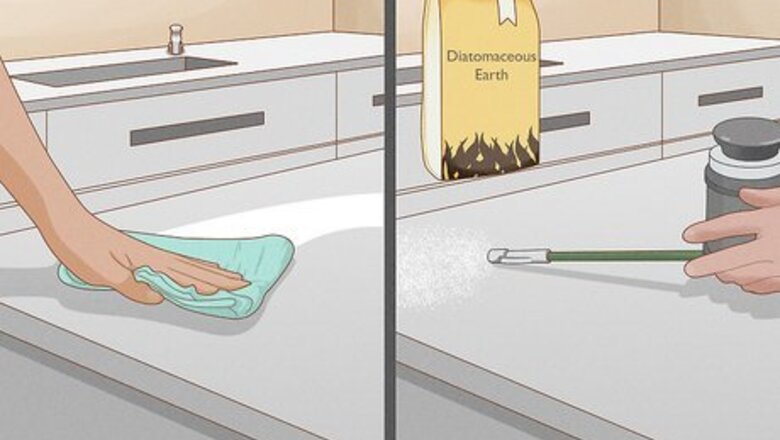
views
X
Research source
For the ants you need to control, there are some very easy, natural and effective natural methods to either ward off or remove ants from your home areas. You can neutralize ant scouts by cleaning your kitchen and storing foodstuffs in containers. You can prevent ants' access to your home by sealing entrances with caulk, make use of barriers and deterrents, like cinnamon, and use baits, like a maple syrup sprinkled with boric acid. Should all else fail, there are natural pest exterminators who can help you with your ant problem.
How to Protect Your Home from Ant Scouts
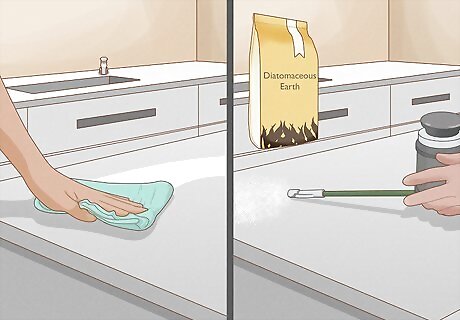
Heed the scouts. The first sign of ants in your kitchen is a warning to you. Scout ants are wandering ants, either singular or relatively few in number. They investigate your kitchen for food and supplies. If these ants return to the nest to inform the other ants, more will be on the way. Waste no time: Cleaning your kitchen Sealing all food and removing all sources of sticky, sweet, greasy, and meaty foods from their access. Spread Diatomaceous Earth, some what heavily, along all of the edges (entry points) of the room. This will cut the exoskeleton of the ant, causing it to dry up and die in a matter of hours.
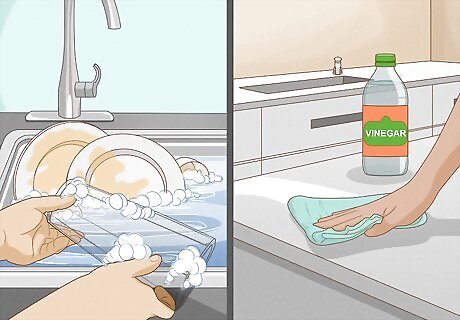
Clean dirty dishes immediately after using them. Wash all dishes as they're used or place them into the dishwasher and shut the door tight. Wipe down all of your cupboard, benchtop, and counter surfaces with vinegar. Vinegar not only cleans and disinfects, it is also an ants deterrent. Remove all sources of garbage and keep the kitchen bin shut tightly. Rinse all recyclable containers before putting them into storage.

Sweep and vacuum the kitchen area daily. Food that's fallen on your floor or been lost in your kitchen's nooks and crannies will be an open invitation to ants. Crumbs and bits of food that have gotten caught in kitchen area rugs will attract ants in the same way. If you're prone to forgetting to sweep and vacuum your kitchen area, you might want to try getting into the habit of doing it at the same time every day, like after breakfast or dinner.
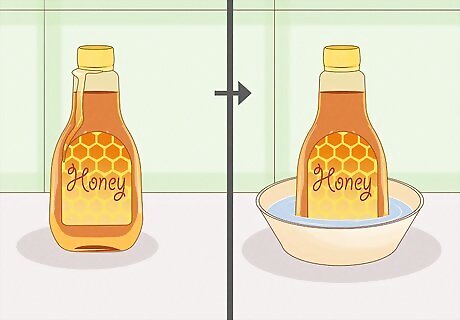
Rinse residue off containers. In particular, check jam/jelly jars, sauce bottles, pickle bottles, cordial bottles and honey and syrup containers. Place your honey jar and any other sugary ant favorites inside a bowl of water. For more details on the bowl of water technique, check out How to keep ants out of honey and How to keep ants away from cat food.
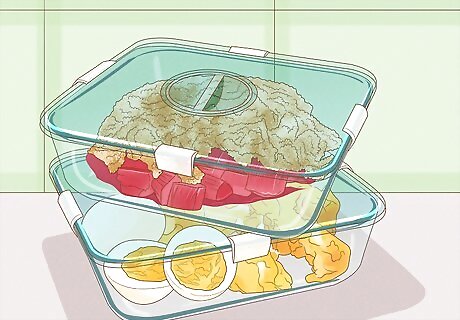
Seal all food items in containers. Use airtight containers or similar ant-proof containers for food storage. Be relentless with this for 3 to 7 days. The ants, having nothing to eat, will go elsewhere. This works because the ants are following the chemical trails left by other ants, who did find food. You may also need to seal fragrant items such as cleaning powders, deodorants, and the like in case these attract the ants' initial attention. Be alert to any congregations of ants around non-food sources.
How to Prevent Access
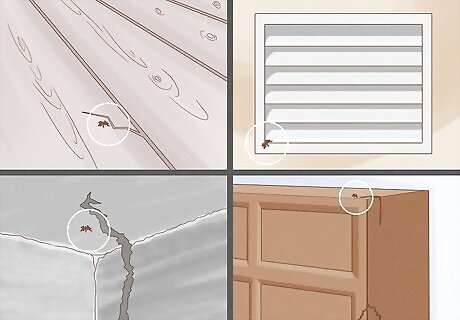
Identify ant access points. While you clean your kitchen and get on ant scout patrol, do some scouting work of your own. Can you tell where the ants are entering the house? Follow the first ants to see where they're entering and leaving. Popular routs of ingress for ants include things like gaps in the woodwork, cracks in cement, vents, screens, cracks in the floorboards, and so on.
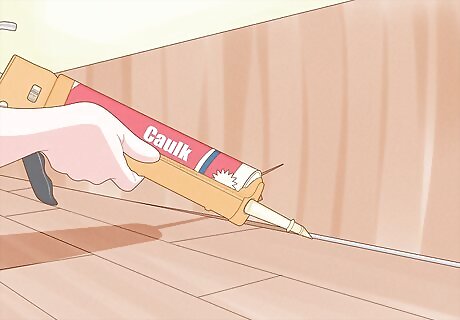
Seal all entrance holes with silicone caulk. Alternatively, you can use putty, glue or plaster. Temporary methods of blocking ant access to your home include petroleum jelly or poster tack. If you use a temporary sealant (such as poster tack), only use this until you can purchase a more permanent solution, as it will deteriorate over time and the gap will open again.
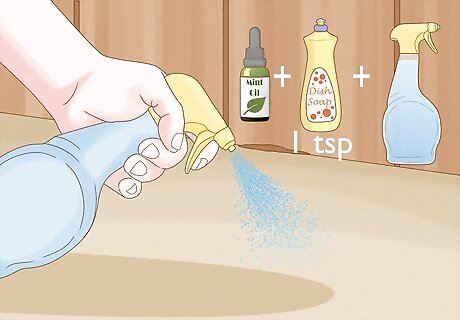
Arm yourself with a spray bottle of soapy water. Soapy water will both kill ants and destroy their chemical trail. This will prevent more ants from following in their tracks. This cheap and easy method consists simply of: Putting one teaspoon of liquid dish soap into a spray bottle and filling it with water. Add mint oil, citrus peels, or citrus rind oil to make this spray extra potent. Spritzing the ants you see with the solution in your spray bottle.
How to Use Barriers and Deterrents
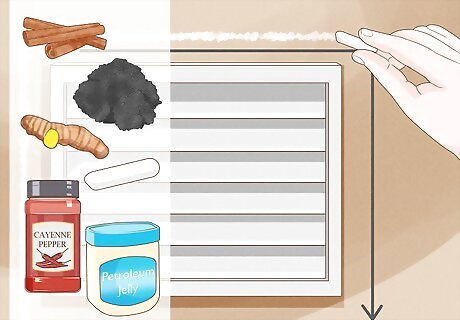
Put up defensive barriers. Many of the products that form these natural ant barriers are probably already in your kitchen; they just need to be deployed properly. A barrier doesn't need to be wider than a ¼ of an inch (6.35mm) but it must form an unbroken line. Use barriers on places like sills, floors, counters, and around ant access points. Some of the items with which you can form barriers include: Powdered charcoal A line of chalk Turmeric Cinnamon Citrus oil Black pepper, cayenne pepper, or red chili pepper. Vaseline (great for doors and windows) Baby powder Powdered cleanser White vinegar and water Desiccating dusts (such as diatomaceous earth or silica aerogel)
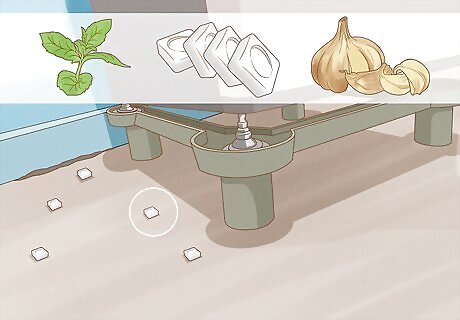
Sprinkle around deterring odors. Ants dislike various scents. Some of these include peppermint, camphor, and garlic. These can be used fresh or in oil form as a deterrent for ants in an area of your home. Use camphor with caution, as it is poisonous to humans and animals. The great thing about these fragrant deterrents is that your own preferences for scent can be used to improve the overall smell of your household odors. Sprinkle crushed mint leaves in ant infested rooms and grow mint near the entrance areas. Dried peppermint is also effective. Rub a raw clove of garlic over ant trails and entrances. Sprinkle lavender oil in ant afflicted areas and grow lavender near their entrances. Spread some oil of clove in ant zones or crush cloves and sprinkle it as a barrier.
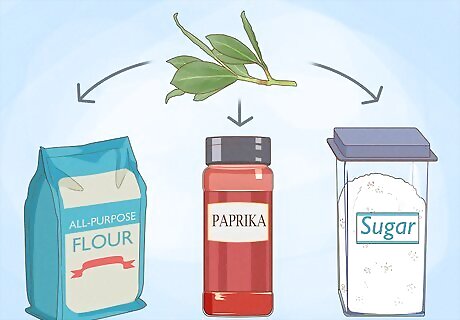
Use bay laurel or bay leaves to keep ants from attractants. Ants are especially attracted to sugar, paprika, and flour. Put bay or bay laurel leaves in your sugar can, flour container, and paprika jar. Over time, the ant repelling strength of these leaves and lose potency. Replace these every month for best results.
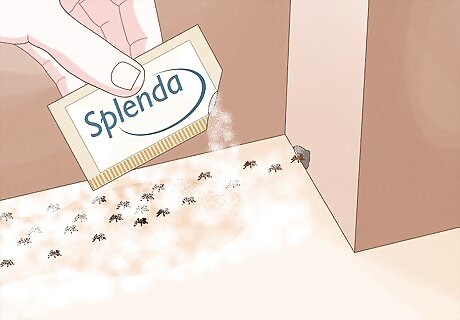
Sprinkle Splenda over ant trails. This is not a danger to kids, so it's a great technique to use where children congregate, such as at school. It's also pet safe, making this a great option if you have animals. Sprinkle Splenda over the trails of any ants you see. Once the ants consume the Splenda, they should die shortly after the fact. Be sure to replenish your Splenda as necessary.
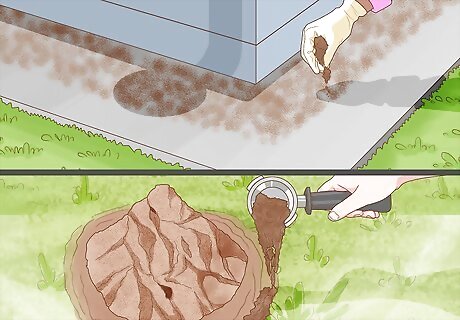
Use coffee grounds. Spread coffee grounds on ant hills and along your house foundation. This safe material confuses the worker ants because they lose their scent trails. This causes the hatched young in the ant colonies to have no food and starve. Be persistent and patient with your use of grounds. It may take a season before you start noticing an effect. It is important to reapply grounds every year, at minimum. Refreshing grounds more frequently will have a stronger, more immediate effect.
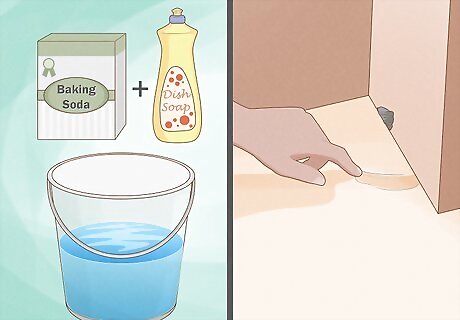
Use dish soap with baking soda. Combine a small amount of dish soap and baking soda in a bucket half filled with water. Agitate this mixture with your hand or a stirring implement. Spread a thin line of this liquid along area where ants are coming in. This technique is a great solution for dealing with ants that are invading windowsills.
How to Use Baits
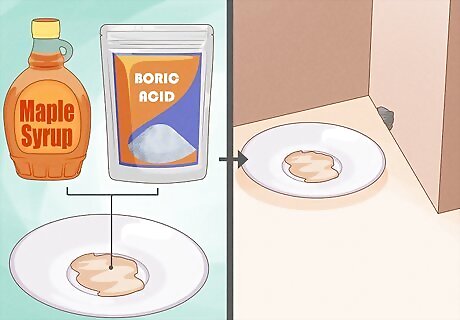
Create your own ant baits with boric acid and maple syrup. You can buy ant baits, but those will likely be chemical preparations that don't fit well with natural attempts to control ants in the home. It's easy to make your own ant baits. A particularly effective one is made with boric acid. Boric acid and sodium borate salts are naturally found in minerals like sassolite. When ants walk in or over boric acid, they ingest it and die. Boric acid is poisonous and should not be ingested or come in contact with the eyes, nose, or mouth. Handle it with gloves. A sample boric acid bait could be made with boric acid and maple syrup. Drizzle a spoonful of syrup on a plate or saucer. Sprinkle this liberally with boric acid. Use a skewer, toothpick, or cotton swab to distribute the acid evenly through the syrup. Place your boric acid bait wherever the ants are frequenting. Keep it out of the reach of children or pets. This method can take a week to take effect.

Use food against ants. There are many foods ants are unable to digest. These methods are effective, though you might have to clean up dead ants after the fact. Spread the following bait foods where the ants are appearing: Corn meal. This method is especially great around pets or children, as cornmeal itself is not poisonous. Cream of wheat (farina). Spread this raw where there are ants. It will expand in their stomachs, killing them. Coffee grounds. Ants are sensitive to caffeine. Leave used coffee grounds where the ants will carry it home and eat it. This method takes a few weeks for results.
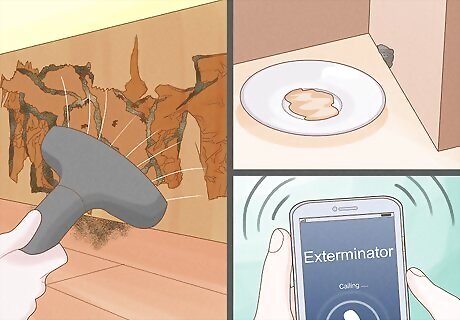
Deal with carpenter ants as naturally as possible. An invasion of carpenter ants is serious. They can compromise or damage your house structure. Piles of broken wings and ants with longer than average bodies are indications of carpenters. You may also see fecal pellets (which look like sawdust) and they can sometimes be heard rustling in the walls. Some ways to deal with them include: Baiting them. They like sugar, so you can turn this against them. Use the boric acid method described previously. Vacuuming their nests out of infested walls, if possible. Calling an exterminator. Professionals can drill holes in the wall and blow in diatomaceous earth, silica aerogel, or boric acid inside to eliminate the infestation. Pyrethrin spray can also be used.
How to Use a Professional Exterminator
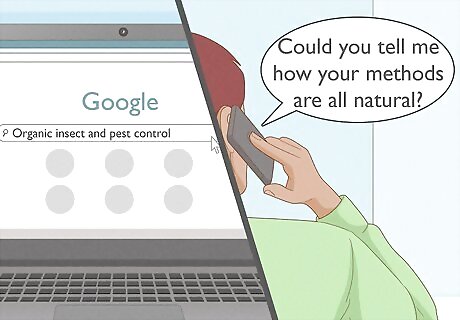
Verify the exterminator uses natural pesticides. Some exterminators specialize in using natural pest control methods. Search for one near you by doing an online keyword search for "organic insect and pest control" or "natural insect and pest extermination." This kind of pest control is often poorly regulated. Some pest services are only "organic" or "natural" in name, but not in fact. Call exterminators and inquire directly about services, saying something like, "Could you tell me how your methods are all natural?"
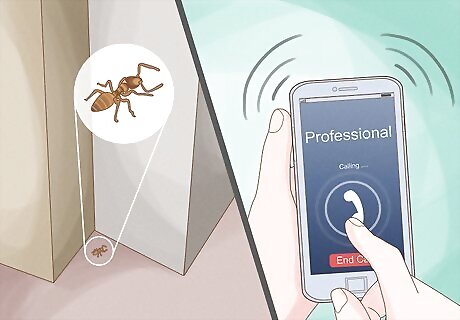
Call a professional to deal with fire ants. Fire ants rarely enter the home, but if they do, get help immediately. They're aggressive, and their stings are painful and can sometimes trigger an allergic reaction. If the ants must be sprayed, insist on the use of a bait that has an insect growth regulator, like abamectin, in it.

Follow all advice given by exterminators. Exterminators are professionals who have been trained not only in pest removal but also prevention. If you've had difficulty with any of the techniques mentioned here, ask the exterminator for their advice. For example, you may have looked high and low but were unable to find the ants' entrance into your home. An exterminator could help pinpoint this for you.
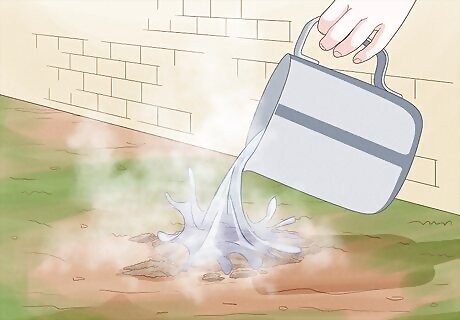
Attack the nest directly on your own. Although you're not a professional, using this professional technique can have professional results. Sneak up on an ant nest on a cool day. Then pour several gallons/liters of boiling water into the nest entrance. If you want to make the water more deadly, add vinegar, insecticidal soaps, citrus oil, pyrethrum insecticide, or ammonia. Repeat this process every day or so until it seems that the ants have given up and moved. This may take several days to take effect.










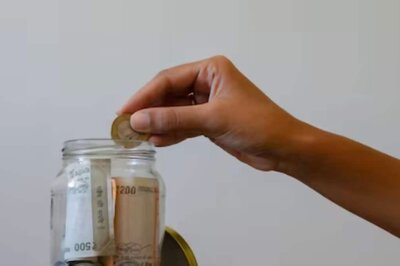








Comments
0 comment